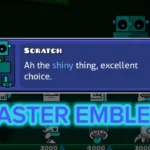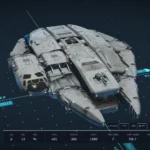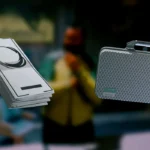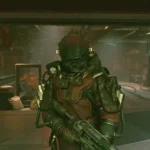Are you ready to embark on a thrilling journey into the depths of Starfield? If you’ve ever wondered about salvage rights in this captivating universe, then you’re in for a treat! In this blog post, we’ll unravel the mysteries surrounding salvage rights and delve into the fascinating world of one-of-a-kind salvage. Whether you’re a seasoned space explorer or just starting your interstellar adventures, this guide will equip you with the knowledge to make the right choices between microbes and aceles. So, buckle up and get ready to uncover the secrets of salvage rights in Starfield!
Understanding Salvage Rights in Starfield
In the vast expanse of Starfield, players find themselves navigating not just the uncharted galaxies but also the intricacies of managing their treasured finds. Salvage rights, a term that often evokes images of dismantling and repurposing, takes on a different shade in the cosmos of this game. Rather than stripping gear and ships down to their bare bolts and circuits, players are presented with a strategic choice: to amass wealth through sales or to leave potential burdens floating in the zero-gravity abyss.
| Salvage Activity | Options in Starfield |
|---|---|
| Gear Salvage | Sell items or avoid collection |
| Ship Salvage | Modify existing ships without scrapping for parts |
| Salvage Rights | Loot destroyed ships for potentially high credits |
For those who find themselves weighed down by an arsenal of gear, the choice is clear: it’s better to offload surplus items for a profit than to hoard them like a space-faring dragon. There is no scrapping mechanism in Starfield—every item you encounter is a potential asset or a silent passenger along your journey. As you navigate through the stars, a discerning eye for value and a knack for negotiation become your greatest allies.
When it comes to the majestic vessels that ferry you across the cosmos, the notion of salvage rights takes on a different hue. Unlike a scavenger disassembling a find on a desolate moon, players cannot simply gut their ships for parts. Starfield prompts its spacefarers to think like engineers rather than wreckers. If a component of a ship beckons to you with its siren song, beckoning you to integrate it into your fleet, you’re encouraged to modify and adapt rather than dismantle.
This constraint breeds innovation and compels players to treat their ships not as disposable assets but as evolving projects. The artistry of ship modification becomes a personal journey, with each vessel reflecting the player’s unique approach to the stars.
Yet, when the laser fire ceases and the debris of a vanquished foe drifts through the void, salvage rights whisper promises of wealth. Looting the remains of destroyed ships can yield a bounty far exceeding the mundane 2k credits. The allure of these rights beckons every pilot with the promise of fortune, making the choice to salvage a strategic decision that can tip the scales of prosperity in your favor.
For a visual guide on how to perfectly navigate these choices, adventurers may turn to the stars of the internet, where resources like this video illuminate the path to successful salvage rights in Starfield.
The delicate balance of collecting, modifying, and salvaging within Starfield’s universe adds depth to a player’s journey, creating a rich tapestry of decision-making that resonates with the echoing vastness of space. Embark on this celestial odyssey, and let the stars guide you to fortune and beyond.
Exploring 1-Of-A-Kind Salvage
In the expansive universe of Starfield, the 1-Of-A-Kind Salvage stands out as a beacon for adventurers and history enthusiasts alike. This bona fide scrapping operation, brought to life by the savvy Angelo “Gel” Alonso, is not just a hub for salvage aficionados—it’s a monument to the valor of the Freestar Militia’s First Cavalry mech unit. This group’s heroism during the Battle of Niira echoes through the cosmos, as they valiantly clashed with the formidable United Colonies forces. It’s here, amidst the remnants of their legacy, that Gel and his dedicated crew have carved out a niche for themselves.
Upon docking at 1-Of-A-Kind Salvage, players are greeted by a panoramic view of scattered mech parts and the ever-busy Gel, who is often found welding the joints of a colossal mech leg or sharing stories at the bar’s counter. This site, steeped in history, offers more than just a pit stop for repairs and trade—it is a living museum, a testament to the struggles and triumphs of the past. The environment is meticulously crafted to immerse players in the daily grind of a salvage operation, complete with the clangs and sparks of metalwork and the haggling of deals over pre-loved spaceship components.
Within this bastion of scrap and memory, players can engage with Gel, a character as multifaceted as the treasures he guards. His tales of the First Cavalry’s bravery provide not just context, but a soul to the inanimate relics that surround him. Every dented armor plate and scorched circuitry carries a story, a fragment of the greater narrative that players piece together as they delve deeper into Starfield’s lore.
Whether you’re looking to trade, gather intel, or simply soak in the ambiance of a place where history and commerce intersect, 1-Of-A-Kind Salvage is an essential destination. It’s these intricately designed locations that enrich the fabric of Starfield, inviting players to not only explore the vast reaches of space but to also discover the stories etched into every corner of the game’s intricate universe.
Choosing Between Microbes and Aceles
Starfield continues to challenge players with its intricate moral compass, presenting a particularly thought-provoking decision: the choice between Microbes and Aceles. This conundrum stands out as it transcends the typical binary good-versus-evil choices found in many games. Here, the dilemma is more nuanced, and while it may not drastically alter gameplay mechanics, it certainly tugs at the player’s own sense of morality.
The decision between these two factions represents a deeper philosophical query—what does one value more in the unfathomable stretches of space? The choice is symbolic, a reflection of the player’s personal ethos rather than a mere strategy to advance in the game. It’s elements like these that elevate Starfield beyond a conventional gaming experience, engaging players in a personal journey that resonates with their own beliefs and ethical boundaries.
As players navigate this and other moral quandaries, they are not simply moving through a digital realm—they are embarking on a voyage of self-discovery. Starfield’s commitment to providing a platform for such introspection only adds to the game’s allure, crafting an experience that is as personally meaningful as it is universally expansive.
Conclusion
Embarking on a voyage through the celestial realms of Starfield necessitates a keen understanding of salvage rights. As pilots and scavengers traverse the vastness of space, the ability to claim the remnants of defeated spacecraft becomes an art form. While the game’s mechanics do not permit the outright scrapping of gear or ships, players are encouraged to see value in the nuanced trade system. It is through this system that explorers can sell items or indulge in the customization of their vessels, piecing together the elements that resonate with their aesthetic and functional desires.
In the heart of this cosmic dance lies 1-Of-A-Kind Salvage, a place that holds the echoes of bygone battles and the whispers of ancient relics. Here, players find themselves not just as mere customers, but as living parts of an ongoing narrative, woven by the charismatic Gel. It’s a space where the machinery of the past and the heroism of the Freestar Militia’s First Cavalry mech unit are celebrated, and where every piece of junk carries a story worth telling.
The moral compass of every spacefarer is put to the test when faced with the dilemma of siding with either the Microbes or Aceles. This decision goes beyond the superficial layers of right and wrong; it is a reflection of one’s deepest values and principles. Starfield’s commitment to immersive role-playing means that these choices will have a profound impact on the player’s journey, shaping not only their in-game persona but also prompting a deeper introspection of their real-world ethos.
With every new system charted and every forgotten wreck salvaged, the universe of Starfield grows ever more intricate. The promise of discovery lies around every corner, beckoning players to uncover more about its rich lore and the complex web of decisions that await. As the narrative unfolds, the certainty of more unique features and challenging decisions serves as a siren call to those eager to chart their own destiny among the stars. [source]
FAQ
Q: Can you scrap ships for parts in Starfield?
A: No, you cannot scrap ships for parts in Starfield.
Q: What are salvage rights in Starfield?
A: Salvage rights in Starfield refer to the ability to loot destroyed ships for valuable items and credits.
Q: What is the significance of salvage rights in Starfield?
A: Salvage rights are important in Starfield because looting destroyed ships often yields more credits than other methods. It is recommended to always choose salvage rights when given the option.
Q: What is the 1-Of-A-Kind Salvage in Starfield?
A: 1-Of-A-Kind Salvage is a legal scrapping operation run by Angelo “Gel” Alonso. The business is named after the Freestar Militia’s First Cavalry mech unit, which played a role in the Battle of Niira against United Colonies forces. Gel and his crew now occupy the base built by the First Cavalry.







